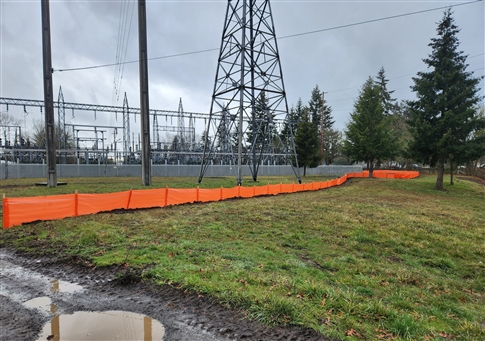Related News
Related News
-
Sustainability Snapshot - Celebrating Energy Efficiency Projects in the Community
Sustainability Snapshops highlight impactful projects completed by EWEB's Customer Solutions department, as a way to celebrate the meaningful work happening behind the scenes.
Find Out More -
McKenzie Valley electric service territory realignment study reaches key milestone
EWEB Commissioners approved a resolution authorizing the General Manager to negotiate and execute agreements with Lane Electric Cooperative regarding a potential realignment of electric service territory in the McKenzie Valley at the Board’s December meeting.
Find Out More -
EWEB secures $2.5 billion of reliable, affordable, carbon-free energy for customers
The new contract with EWEB’s largest energy supplier, the Bonneville Power Administration, forms the foundation of a diverse energy portfolio.
Find Out More -
Women in STEM: Meet the Hydro Project Engineer Building Habitat for Salmon
EWEB Engineer Associate Val Chang found her way to the McKenzie River from Los Angeles, inspired by heritage trips to the waters of Taiwan and key mentors along the way.
Find Out More -
Public Power Week Poster Contest Winners 2025
The results are in! View the winning posters from EWEB's 2025 Public Power Week Poster Contest.
Find Out More -
EWEB Hometown Heroes compete internationally
Out of 290 teams from 14 different countries, EWEB's Lineman Rodeo team places in the top third of competitors.
Find Out More -
EWEB's Halloween Truck-or-Treat is a huge success
Community members are accustomed to spotting EWEB trucks around Eugene streets and neighborhoods. But last week, those familiar vehicles looked a little different. At EWEB's second annual Truck-or-Treat Customer and Crew Appreciation Event, our fleet transformed into a festive Halloween spectacle.
Find Out More -
Let's Talk Turkey. Is your family ready for winter?
We're heading into the holidays, but that also means snow, ice, and not-so-nice weather might be in the forecast. Here are some tips to prepare in advance.
Find Out More -
Vote for your favorite Public Power Week Posters
The top five submittals will receive awards. Help us pick the winners.
Find Out More -
EWEB Hosts Annual Spill Drill to Protect McKenzie River
EWEB led emergency responders in its annual “spill drill” on the McKenzie River on Wednesday, Oct. 15, at the Trail Bridge Campground.
Find Out More -
Electric Projects underway in North & South Eugene
Underground lines and disaster-resilient power poles are part of EWEB’s infrastructure upgrade near Eugene’s largest natural resource area.
Find Out More -
EWEB general manager to retire in 2026
EWEB launches nationwide search for next leader to continue the progress of the last decade and ensure a smooth transition.
Find Out More -
The Bonneville Power Administration Rate Change and Your EWEB Bill
BPA’s finalized rate increase is smaller than projected, and EWEB’s pass-through adjustment effective October 1, 2025 will now be 2.7% for residential customers—down from the anticipated 4%.
Find Out More -
Quartz Creek: Setting the Stage for Floodplain Restoration
The project resets the floodplain along 1.8 miles of a formerly channelized creek to improve water quality, fish habitat and natural disaster resiliency.
Find Out More -
You can’t predict the next disaster, but you can prepare
The earthquake lasted less than a minute. But now the power’s out. The tap runs dry. Cell service is spotty. Would you be ready?
Find Out More - Show More
Deconstruction begins on Currin Substation near Garden Way and 105
February 23, 2023 • Robyn Smith, EWEB Communications

The Currin substation near Garden Way and 105, was constructed in 1962 and is considered the “Grand Central Station” of EWEB’s electrical grid. A lot of power flows through this station. It feeds power from BPA and Pacific Corp. transmission lines to EWEB’s grid, connects power upriver to the Hayden Bridge filtration plant and to Eugene’s downtown electrical network. But, “Grand Central” is about to get a big makeover.
For the past year, EWEB’s electric division has been preparing for a complete reconstruction of the Currin substation. Quite simply, it’s reached the end of its useful life.
“We’ve discovered more and more failures in this substation over the years and the overall design of the station does not meet modern expectations,” said Philip Peterson, EWEB systems engineer.
Since the early 2000s, systematic upgrades to substation equipment have made operation of the 60-year-old station difficult as old and new equipment is unable to work together. Rebuilding the Currin substation will increase load capacity to ensure we meet future needs and improve reliability by avoiding outages due to equipment failure or routine maintenance.
While Currin is decommissioned, power will continue to flow from other substations that can easily handle the load and demand until Currin has been fully reconstructed, most likely by spring of 2024.
Erosion control construction on the site to mitigate construction debris is just finishing up and over the next few weeks, crews will begin demolition and removal of the aging infrastructure.
Your rates play a role in infrastructure improvements
Currin is just the first of several substations scheduled for a rebuild over the next ten years as part of EWEB’s major infrastructure investments through our Capital Improvement Plan for rehabilitating, replacing, and installing new infrastructure.
The electricity we all rely on would not be possible without the infrastructure that delivers it.
From power plants to distribution and transmission lines, substations, and transformers — utility infrastructure is a complex system that requires investment and maintenance to provide constant, reliable power.
Visit eweb.org/rateinfo to learn more about what goes into your EWEB rates and what you get for your money.
Pictured above: Erosion control fence installed at the Currin construction site.

